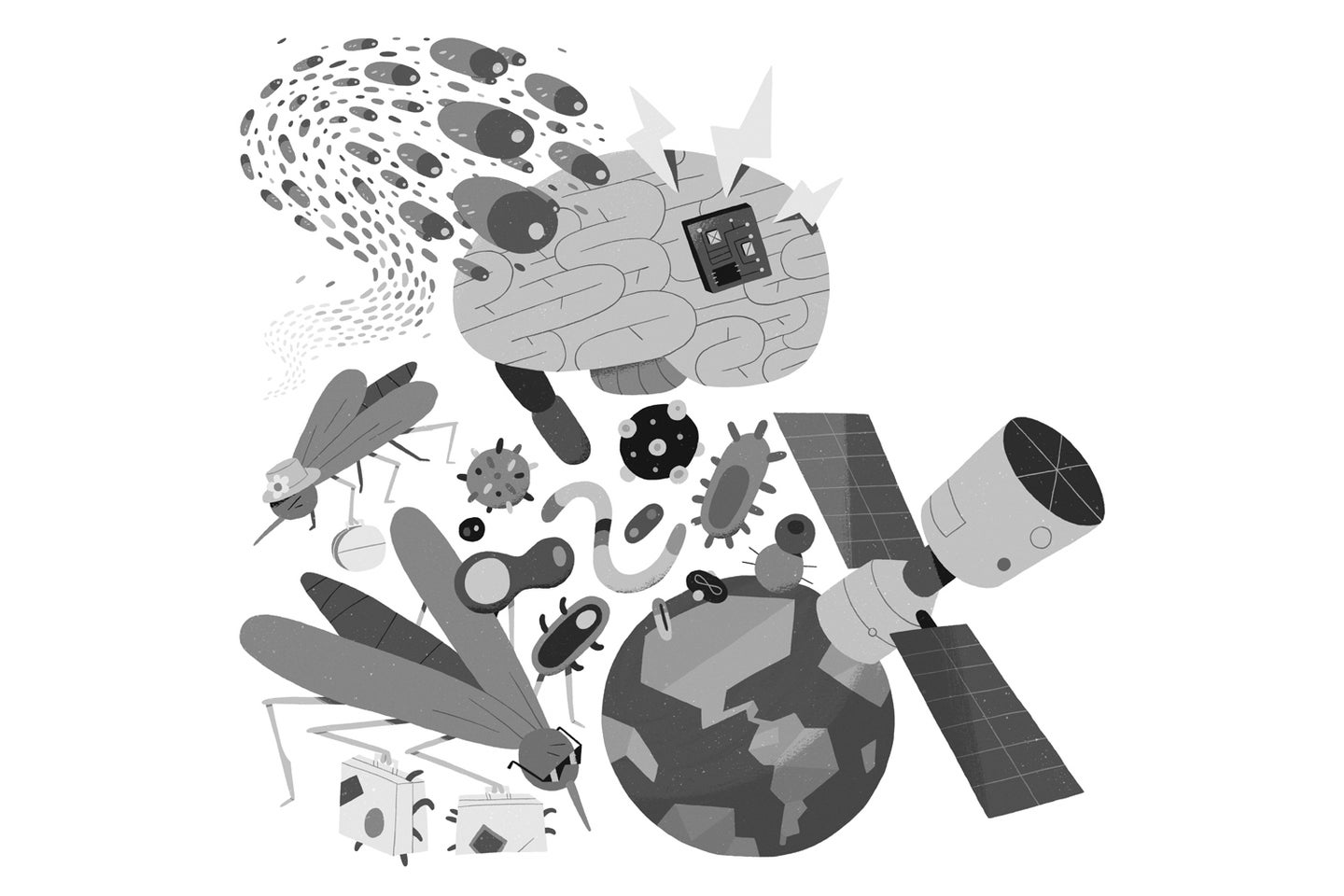Will hotter temperatures make infections more common?
From robot swarms to astroecology, these scientists are reimagining the boundaries in science.

As told to Eleanor Cummins
The world of human inquiry knows no borders. Infinite lines connect disparate disciplines. From physics to public health, these researchers are pioneering new fields on the fringes of existing science.
Bots of a feather
Simon Garnier, Swarm Lab Founder at New Jersey institute of Technology
Army ants are pretty dumb on their own, but together they can form a protective brigade around their queen that can conform to any shape. We are using these natural self-organized systems to inspire novel algorithms for more-intelligent robot swarms.
Insider info
John Rogers, Materials Scientist at Northwestern University
Medical devices typically function outside the body. Now, with bioelectronics (which connect hardware to living tissue), we’re going inside. I made a dissolvable sensor that tracks brain swelling post-injury. Next up: similar gadgets that also deliver drugs.
Primate spotlight
Claire Burke, Astroecologist at Liverpool John Moores University
Telescopes and computer programs can detect heat signatures that match up with stars. We turned that setup around to count endangered primates. Drones and those same algorithms connect body temperatures with specific species. We call it astroecology.
Tiny homes
Suzanne Ishaq, Microbial Ecologist at the University of Oregon
The microbiome typically refers to tiny bugs living on our skin or in our guts. But we’ve begun examining seemingly inert sites, such as homes and offices, and realized those spots also have biomes. Most Americans spend 90 percent of their time inside, so understanding these spaces is key.
Changing places
Sadie Ryan, Medical Geographer at the University of Florida
Climate change will have a huge impact on human health. In 2012, my team found that malaria’s optimal temperature for transmission is far lower than we thought—just 77 degrees Fahrenheit. In Africa, densely populated areas will soon be in the danger zone more often, so infection rates could rise.
This story originally published in the Out There issue of Popular Science.